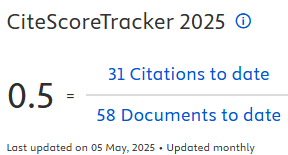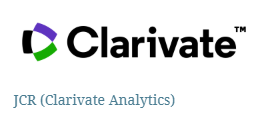Barriers and drivers of the relationship between gender diversity and innovation in organizations
DOI:
https://doi.org/10.5585/2025.26351Keywords:
gender diversity, innovation, thematic analysisAbstract
Purpose: To analyze the relationship between gender diversity and innovation in organizations by exploring its barriers and drivers.
Methodological Approach: An exploratory qualitative investigation commenced with a literature review and thematic analysis of relevant publications located in the Web of Science (WoS) database. The identification of barriers and drivers, associated with the analysis of their influence and manifestation within the organizational context, was demonstrated through the identification of emerging topics obtained through the review and the elements highlighted in the literature, which were integrated to form a thematic map.
Originality/Relevance: This work contributes by exploring how gender diversity relates to innovation. Furthermore, this study highlights the importance of managerial strategies and public policies to promote gender equality and stimulate organizational creativity.
Main Results: The results indicate that organizations with greater gender diversity tend to be more innovative. The identification of barriers and drivers contributed to guiding the development of a thematic map that orients strategies to foster innovation in companies.
Theoretical Contributions: This study contributes to organizational theory by interpreting the relationship between gender diversity and innovation. In addition, it highlights the need for inclusive policies and management practices that promote equal opportunities.
Managerial Contributions: The findings have practical implications for managers and policymakers. The implementation of gender equality policies and the promotion of an inclusive work environment to maximize the innovative potential of organizations are recommended.
Downloads
References
Adams, K., Attah-Boakye, R., Yu, H., Johansson, J. & Njoya, E. T. (2023). Female board representation and coupled open innovation: Evidence from emerging market multinational enterprises. Technovation,124, 102749, 2023.https://doi.org/10.1016/j.technovation.2023.102749
Agnete Alsos, G., Ljunggren, E., & Hytti, U. (2013). Gender and innovation: state of the art and a research agenda. International Journal of gender and Entrepreneurship, 5(3), 236-256. https://doi.org/10.1108/IJGE-06-2013-0049
Ahmed, M., & Hamilton, L. C. (2021). Current challenges for women in orthopaedics. Bone & joint open, 2(10), 893–899. https://doi.org/10.1302/2633-1462.210.BJO-2021-0089.R1
Anderson, N., Potočnik, K., & Zhou, J. (2014). Innovation and Creativity in Organizations: A State-of-the-Science Review, Prospective Commentary, and Guiding Framework. Journal of Management, 40(5), 1297-1333. https://doi.org/10.1177/0149206314527128
Aria, M., & Cuccurullo, C. (2017). Bibliometrix: An R-tool for comprehensive science mapping analysis, Journal of Informetrics. Journal of Informetrics, 11(4), 959-975. https://doi.org/10.1016/j.joi.2017.08.007
Benkraiem, R., Shuwaikh, F., Lakhal, F., & Guizani, A. (2022). Carbon performance and firm value of the World's most sustainable companies. Economic Modelling, 116, 106002. https://doi-org.ez17.periodicos.capes.gov.br/10.1016/j.econmod.2022.106002
Biscione, A., Boccanfuso, D., Caruso, R., & de Felice, A. (2022). The innovation gender gap in transition countries. Economia Politica, 39(2), 493-516. https://doi-org.ez17.periodicos.capes.gov.br/10.1007/s40888-021-00238-4
Biswas, K., Boyle, B., & Bhardwaj, S. (2021). Impacts of supportive HR practices and organisational climate on the attitudes of HR managers towards gender diversity–a mediated model approach. Evidence-Based HRM: A Global Forum for Empirical Scholarshi, 9(1), 18-33. Recuperado de: https://doi-org.ez17.periodicos.capes.gov.br/10.1108/EBHRM-06-2019-0051
Botella, C., Rueda, S., López-Iñesta, E. & Marzal, P. (2019). Gender Diversity in STEM Disciplines: A Multiple Factor Problem. Entropy. 21(1), 30. https://doi.org/10.3390/e21010030
Callon, M., Courtial, J. P., & Laville, F. (1991). Co-word analysis as a tool for describing the network of interactions between basic and technological research: The case of polymer chemsitry. Scientometrics, 22, 155-205. https://doi-org.ez17.periodicos.capes.gov.br/10.1007/BF02019280
Capozza, C., & Divella, M. (2023). Gender diversity in European firms and the R&D-innovation-productivity nexus. The Journal of Technology Transfer, 1-22. https://doi-org.ez17.periodicos.capes.gov.br/10.1007/s10961-023-10003-3
Christensen, H. R., Nexø, L. A., Pedersen, S., & Breengaard, M. H. (2022). The lure and limits of smart cars: visual analysis of gender and diversity in car branding. Sustainability, 14(11), 6906. https://doi.org/10.3390/su14116906
Cooper, J. N., Newton, A. C., Klein, M., & Jolly, S. (2020). A call for culturally responsive transformational leadership in college sport: An anti-ism approach for achieving equity and inclusion. Frontiers in Sociology, 5, 65. https://doi.org/10.3389/fsoc.2020.00065
Cropley, A. (2002). Creativity and innovation: Men’s business or women’s work? Baltic Journal of Psychology, 3, 77-88. https://www.researchgate.net/profile/Arthur-Cropley/publication/260360566_Creativity_and_innovation_Men's_business_or_women's_work/links/0a85e530dee8f6e4f1000000/Creativity-and-innovation-Mens-business-or-womens-work?_sg%5B0%5D=started_experiment_milestone&origin=journalDetail&_rtd=e30%3D
Cropley, D., & Cropley, A. (2017). Innovation capacity, organisational culture and gender. European Journal of Innovation Management, 20(3), 493-510. https://doi.org/10.1108/EJIM-12-2016-0120
Cuevas-Vargas, H., Velázquez-Espinoza, N., & Colín-Salgado, M. (2022). Technological Innovation in Colombian Small Firms: A Gender Multi-Group Analysis. Business Systems Research: International journal of the Society for Advancing Innovation and Research in Economy, 13(1), 46-65. https://doi.org/10.2478/bsrj-2022-0004
Dalessandro, C., & Lovell, A. (2023). Influence and Inequality: Worker Identities and Assessments of Influence over Workplace Decisions. Social Sciences, 12(4), 205. https://doi.org/10.3390/socsci12040205
Fernández-Torres, Y., Gutiérrez-Fernández, M., & Gallego-Sosa, C. (2021). Environmental performance of the tourism sector from a gender diversity perspective. International Journal of Environmental Research and Public Health, 18(16), 8834. https://doi.org/10.3390/ijerph18168834
Fine, C., Sojo, V., & Lawford‐Smith, H. (2020). Why does workplace gender diversity matter? Justice, organizational benefits, and policy. Social Issues and Policy Review, 14(1), 36-72. https://doi.org/10.1111/sipr.12064
Fuentes‐Fuentes, M. del. M., Quintana‐García, C., Marchante‐Lara, M., & Benavides‐Chicón, C. G. (2023). Gender diversity, inclusive innovation and firm performance. Sustainable Development, 31(5), 3622-3638. https://doi.org/10.1002/sd.2615
Graves Jr, J. L., Kearney, M., Barabino, G., & Malcom, S. (2022). Inequality in science and the case for a new agenda. Proceedings of the National Academy of Sciences, 119(10), e2117831119. https://doi.org/10.1073/pnas.211783111
Grimaldi, M., Cricelli, L., & Rogo, F. (2012). A methodology to assess value creation in communities of innovation. Journal of Intellectual Capital, 13(3), 305-330. https://doi.org/10.1108/14691931211248882
Hakovirta, M., Denuwara, N., Topping, P., & Eloranta, J. (2023). The corporate executive leadership team and its diversity: impact on innovativeness and sustainability of the bioeconomy. Humanities and Social Sciences Communications, 10(1), 1-10. https://doi.org/10.1057/s41599-023-01635-9
Heubeck, T., & Meckl, R. (2023). Does board composition matter for innovation? A longitudinal study of the organizational slack–innovation relationship in Nasdaq-100 companies. Journal of Management and Governance, 1-28. https://doi.org/10.1007/s10997-023-09687-4
Hofstra, B., Kulkarni, V. V., Munoz-Najar Galvez, S., He, B., Jurafsky, D., & McFarland, D. A. (2020). The diversity–innovation paradox in science. Proceedings of the National Academy of Sciences, 117(17), 9284-9291. https://doi.org/10.1073/pnas.1915378117
Huang, S., Battisti, M., & Pickernell, D. (2023). The roles of innovation strategy and founding team diversity in new venture growth. Journal of Business Research, 158, 113653. https://doi.org/10.1016/j.jbusres.2023.113653
Jansen, W. S., Kröger, C., Van der Toorn, J., & Ellemers, N. (2021). The right thing to do or the smart thing to do? How communicating moral or business motives for diversity affects the employment image of Dutch public and private sector organizations. Journal of Applied Social Psychology, 51(7), 746-759. https://doi.org/10.1111/jasp.12783
Javaid, H. M., Ain, Q. U., & Renzi, A. (2023). She-E-Os and innovation: do female CEOs influence firm innovation?. European Journal of Innovation Management, 26(4), 982-1004. https://doi.org/10.1108/EJIM-04-2021-0227
Javeed, S. A., Teh, B. H., Ong, T. S., Chong, L. L., Abd Rahim, M. F. B., & Latief, R. (2022b). How does green innovation strategy influence corporate financing? Corporate social responsibility and gender diversity play a moderating role. International Journal of Environmental Research and Public Health, 19(14), 8724.https://doi.org/10.3390/ijerph19148724
Javeed, S. A., Zhou, N., Cai, X., & Latief, R. (2022a). How does corporate management affect green innovation via business environmental strategies?. Frontiers in Environmental Science, 10, 1059842.
Joecks, J., Pull, K., & Scharfenkamp, K. (2023). Women directors and firm innovation: The role of women directors' representative function. Managerial and Decision Economics, 44(2), 1203-1214. https://doi.org/10.1002/mde.3742
Kim, E. E., Klein, A. L., Lartigue, J. W., Hervey-Jumper, S. L., & Rosseau, G. (2021). Diversity in neurosurgery. World Neurosurgery, 145, 197-204. https://doi.org/10.1016/j.wneu.2020.08.219
Kleinknecht, A., & Mohnen, P. (Eds.). (2001). Innovation and firm performance: Econometric explorations of survey data. Springer. https://doi.org/10.1057/9780230595880
Kuschel, K., Ettl, K., Díaz-García, C., & Alsos, G. A. (2020). Stemming the gender gap in STEM entrepreneurship–insights into women’s entrepreneurship in science, technology, engineering and mathematics. International Entrepreneurship and Management Journal, 16(1), 1-15. https://doi.org/10.1007/s11365-020-00642-5
Leifer, R. (2000). Radical innovation: How mature companies can outsmart upstarts. Harvard Business Press.
Lindberg, R., & Schiffbänker, H. (2013). Gender and innovation. In: E. G. Carayannis (Eds) Encyclopedia of Creativity, Invention, Innovation and Entrepreneurship. Springer, 782-789. https://doi.org/10.1007/978-1-4614-3858-8_454
Ma, Z., Shu, G., Wang, Q., & Wang, L. (2022). Sustainable governance and green innovation: A perspective from gender diversity in China’s listed companies. Sustainability, 14(11), 6403. https://doi.org/10.3390/su14116403
Machokoto, M., Lemma, T. T., Dsouli, O., Fakoussa, R., & Igudia, E. (2023). Coupling men-to-women: Promoting innovation in emerging markets. International Journal of Finance & Economics, 1–22. https://doi.org/10.1002/ijfe.2842
McGuire, E., Rietveld, A. M., Crump, A., & Leeuwis, C. (2022). Anticipating gender impacts in scaling innovations for agriculture: Insights from the literature. World Development Perspectives, 25, 100386. https://doi.org/10.1016/j.wdp.2021.100386
Moraes, L. L. D., & Kafure, I. (2023). Bibliometria e ciência de dados um exemplo de busca e análise de dados da Web of Science (WoS). RDBCI: Revista Digital de Biblioteconomia e Ciência da Informação, 18, e020016. https://doi.org/10.20396/rdbci.v19i0.8658521
Na, K., & Shin, K. (2019). The gender effect on a firm’s innovative activities in the emerging economies. Sustainability, 11(7), 1992. https://doi.org/10.3390/su11071992
Natcher, D., Maria Bogdan, A., Lieverse, A., & Spiers, K. (2020). Gender and Arctic climate change science in Canada. Palgrave Communications, 6(1). https://doi.org/10.1057/s41599-020-0407-6
Østergaard, C. R., Timmermans, B., & Kristinsson, K. (2011). Does a different view create something new? The effect of employee diversity on innovation. Research policy, 40(3), 500-509. https://doi.org/10.1016/j.respol.2010.11.004
Patton, M. Q. (2002). Qualitative research & evaluation methods. Sage.
Pompili, C., Brüls, A., Elswick, E., Masschelein, K., & Backhus, L. (2021). Women in thoracic surgery: lesson learned from medical industry partners. Journal of Thoracic Disease, 13(1), 485. https://doi.org/10.21037%2Fjtd-2020-wts-02
Ruiz-Palomo, D., Fernández-Gámez, M. Á., & León-Gómez, A. (2022). Analyzing the effect of financial constraints on technological and management innovation in SMEs: a gender perspective. Sage Open, 12(1), 21582440221079925. https://doi.org/10.1177/21582440221079
Sánchez, R., Diaz, Á., & Urbano, A. (2023). Vertical segregation, innovation, and gender diversity in Spain’s industrial sector. Journal of the Knowledge Economy, 1-22. https://doi.org/10.1007/s13132-023-01211-1
Soulat, A., & Nasir, N. (2017). Examining the role of employee diversity management and employee involvement variation on organizational innovation: A study from Pakistan. Singaporean Journal of Business, Economics and Management Studies, 51(118), 1-8. http://dx.doi.org/10.12816/0037225
Souza, L. K. D. (2019). Pesquisa com análise qualitativa de dados: conhecendo a Análise Temática. Arquivos brasileiros de psicologia. 71(2), p. 51-67. http://hdl.handle.net/10183/245380
Specht, A., & Crowston, K. (2022). Interdisciplinary collaboration from diverse science teams can produce significant outcomes. PLoS One, 17(11), e0278043. https://doi.org/10.1371/journal.pone.0278043
Tarjem, I. A., & Tufan, H. A. (2023). The men who feed the world? Putting masculinities on the agenda for crop breeding research for development. Frontiers in Sustainable Food Systems, 7, 1243217. https://doi.org/10.3389/fsufs.2023.1243217
Thomson, A., Hayes, M., Hanlon, C., Toohey, K., & Taylor, T. (2023). Women’s professional sport leagues: A systematic review and future directions for research. Sport Management Review, 26(1), 48-71. https://doi.org/10.1080/14413523.2022.2066391
Urbizagástegui-Alvarado, R. (2022). Bibliometria brasileira: análise de copalavras. Transinformação, 34, e220004. https://doi.org/10.1590/2318-0889202234e220004
Yassa, M. A., & Edinger, A. L. (2023). Diversifying faculty recruitment in biomedical sciences. The FASEB Journal, 37(11), e23224. https://doi.org/10.1096/fj.202300688RR
Yoo, H. S., Jung, Y. L., & Jun, S. P. (2023). The effects of SMEs' R&D team diversity on project‐level performances: evidence from South Korea's R&D subsidy program. R&D Management, 53(3), 391-407. https://doi.org/10.1111/radm.12575
Zhang, Z., & Zong, Q. (2023). Gender diversity and patent quality: Evidence from Chinese patent data. International Studies of Economics, 18(4), 430-453. https://doi.org/10.1002/ise3.54
Downloads
Published
How to Cite
Issue
Section
License
Copyright (c) 2025 Adriana Kirley Santiago Monteiro, Fabiana dos Santos Lima, Rafael Fernandes de Mesquita, Eulálio Gomes Campelo Filho, Fátima Regina Ney Matos

This work is licensed under a Creative Commons Attribution-NonCommercial-ShareAlike 4.0 International License.
- Abstract 267
- pdf 100
- pdf (Português (Brasil)) 66











